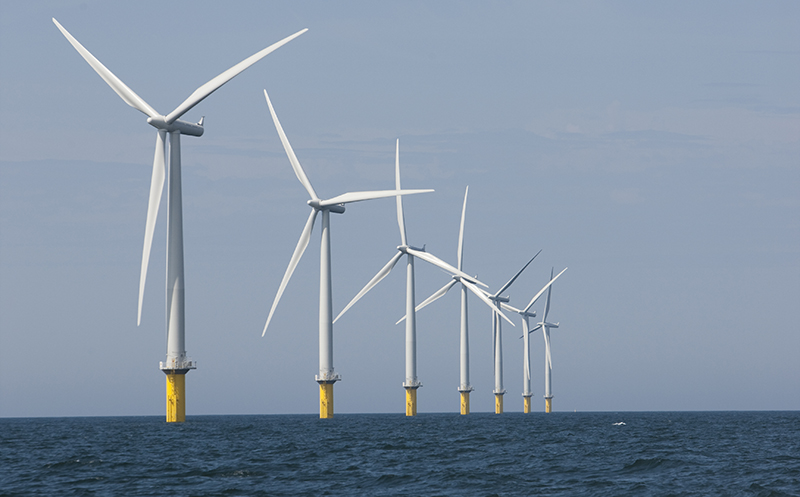(Bloomberg) — Wind-power skeptic Donald Trump’s proposed tax reform may have an unintended consequence: threatening wind farms’ balance sheets.
The president-elect’s proposal to cut the corporate tax rate to as low as 15% may curb availability of an esoteric, but critical, clean-energy financing mechanism known as tax equity, according to a report Friday by the Chicago-based energy and infrastructure adviser Marathon Capital LLC.
Existing tax-equity backers may be able to demand a bigger share of wind-farm cash flows, while developers may have to put up more capital themselves, Marathon determined. The shift in the market may prompt smaller developers to sell projects to bigger rivals that are better positioned to win part of what would be a shrinking pie of tax-equity investment.
“Any tax reform that reduces corporate tax appetite would erode the potential supply of tax equity, pushing the supply-demand balance even further toward a buyer’s market,” said Daniel Shurey, an analyst at Bloomberg New Energy Finance in New York. “In this situation, only the most experienced and well-capitalized developers would catch the attention of tax equity investors.”
Tax-equity investment has been rising, with about $14.8 billion expected to be raised last year, based on mid-2016 New Energy Finance forecasts, exceeding the record-high of $13.1 billion in 2015. Wind and solar projects are expected to need a total of $56.2 billion in capital during Trump’s first term, according to the London-based research company.
In tax-equity deals, clean-energy developers sell a portion of their projects’ tax credits to companies — typically big banks — that can apply the credits to their own tax bills. It’s a critical part of part of the financing process, and debt deals are often often structured around tax-equity commitments.
Tax Bills
Lower taxes would drive down businesses liabilities. The aggregate U.S. corporate tax liability would plunge as much as 57%, if the rate falls to 15%, or by 28% if the rate is reduced to 25% rate, according to the Marathon report.
That could significantly curb businesses’ need for tax credits. It would also drag down wind developers’ after-tax internal rates of returns, by 80 basis point to 240 basis points, Marathon determined.
Trump’s views on wind power are widely known, though it’s now cheaper than coal or natural gas in some states.
“ Wind is a problem,” he said at a May oil industry conference. “Plus it is very, very expensive and it doesn’t work without subsidies.”
Trump’s proposals go beyond a plan floated last year by some Republican congressmen to cut corporate tax rates to 20% from the current 35%. The plans felt much more real after election day.
“Most people didn’t focus on the tax rate until the day after the election,” said Matthew Shanahan, a Marathon Capital managing director and an author of the reporter. “It hasn’t changed since 1986.”
Now, it’s one of the most-discussed topics among wind developers, bankers, investors and attorneys. Even without a concrete proposal on the table, it’s affecting financing activity.
“The uncertainty will probably hurt most,” Shurey said. “It’s already a difficult argument trying to incentivize new players to come in.”
Bloomberg News by by Brian Eckhouse




